IN A HURRY? CHECK OUT SCRIB3D Advanced 3D Printing pen TOP PROS:
3D printing technology has come a long way from bulky desktop devices that require quite a bit of technical knowledge to operate. This all changed with the introduction of 3D pens, an artist’s dream come true. Just think about it, rather than being confined by a sheet of paper, you can now turn your imagination into reality. Also, using a 3D pen is incredibly fun!
This makes them incredibly popular among children because it allows them to express their creativity in ways not possible before. When we were kids, the only way to express our creativity was by going ham on crayons or lego blocks. We really envy today’s kids.
In this article, we’re going to give you a comprehensive look at 3D pens, their history, how they work, and what you should consider when choosing a 3D printing pen.
CONTENTS:
- History of the first 3D pen
- 3D pen: a tutorial for beginners
- Before you buy: Everything you need to know about 3D pens
- The 4 best 3D pens
| IMAGE | PRODUCT | DETAILS | |
|---|---|---|---|
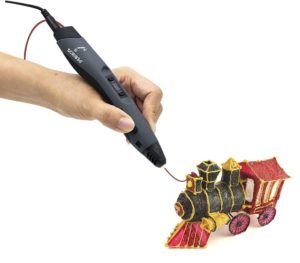 |
Our #1 Choice
SCRIB3D Advanced 3D Printing pen |
|
Check on Amazon |
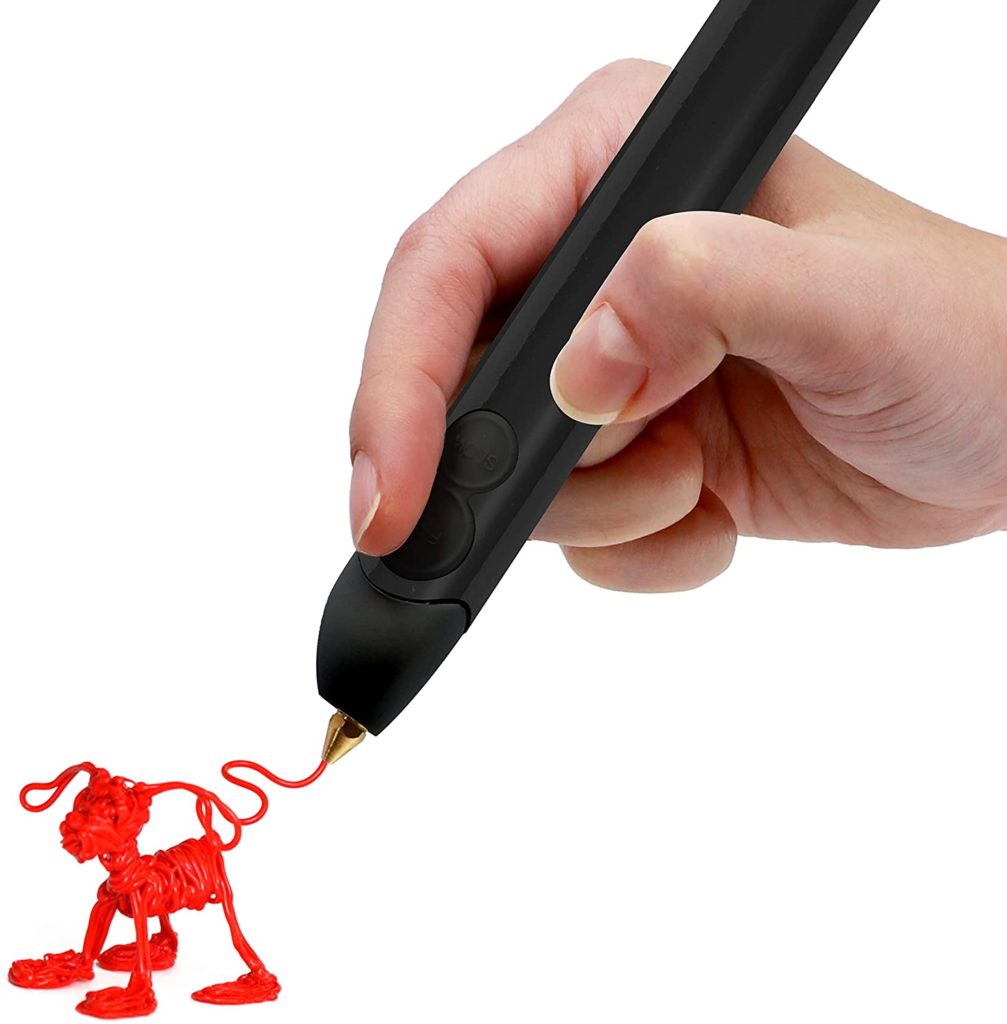 |
3Doodler Create+ 3D Printing Pen |
|
Check on Amazon |
 |
MYNT3D Pen |
|
Check on Amazon |
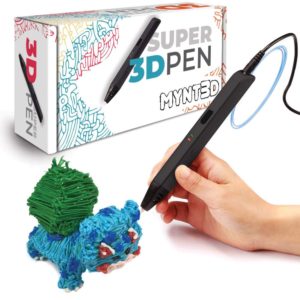 |
MYNT3D Super 3D Pen |
|
Check on Amazon |
So, let’s start with a short history lesson.
History Of The First 3D Pen
The world’s first and definitely the best 3D drawing device, the 3Doodler allows users to create all sorts of 3D shapes. It works on the same principle as a PLA 3D printer, it extrudes a heated plastic filament that cools almost immediately to form a solid, and most importantly, stable structure. Developers of 3Doodler claim that it is the first 3D drawing device in the world. And this fact cannot be denied, and that’s why we’re going to take a closer look at its history.
When we said that a 3D printer works on the same principle as a PLA, we meant it worked exactly like one. A 3D pen utilizes the same type of extruder and heating element that you can find on any desktop 3D printer. However, rather than controlling the pen with stepper motors and computer software, you guide the printer head with your free hand.
The way this 3D printing device works is amazingly simple. Just like any 3D printer you’ve come across. A 3D printing pen simply works by heating a plastic filament until it reaches its melting point and then gets ejected through an extruder head. Basically, it functions in the same way as a hot glue gun.
The melted filament is quite soft, which enables you to work it into any shape or fused surface you desire. When the melted plastic gets extruded through the nozzle, it almost instantaneously cools down and hardens to form a solid structure. The most amazing part about it is that it will hold any shape you’ve worked it in. Thanks to this, a 3D pen is an excellent it an excellent tool for everything from fixing things up to expressing your creativity.
Origins
The 3D pen is a brainchild of three inventors, Peter Dilworth, Daniel Cowen, and Maxwell Bogue. In early 2012, these three forward thinkers built their first 3D prototype at the Artisans’ Asylum in Somerville, Massachusetts. Right after waiting for almost 15 hours for their first 3D print job to finish, they realized that their 3D printer had missed a crucial line, which forced them to start all over. This unfortunate mishap lead them to an idea, they wouldn’t have to scuttle the whole model if they could somehow add the necessary line the printer missed by hand.
They started working on a prototype of a handheld 3D printer. And so, they started working on a 3D pen that will utilize a thread made of either poly-lactic acid (PLA) or acrylonitrile butadiene styrene (ABS). After a short while, they patented a process which includes melting and then cooling the thread while it moves through the 3D pen. This process allows this device to be used to create handmade 3D objects.
The 3Doodler can be best described as a glue gun you use for 3D printing because of the way the filament is discharged from the tip. One foot of filament equates to almost eleven feet of extruded material.
According to Mac Bogue, the lead behind 3D printing pen, the 3Doodler provides an excellent introduction to the world of 3D printing. Mac demonstrated the 3Doodler at Berlin’s IFA trade show, and it was absolutely incredible. Folk at the show couldn’t believe how 3Doodler managed to execute the task to perfection.
The Creators
We can’t talk about the history of the first 3D pen without mentioning its creators. So, here’s a short background on Maxwell Bogue, Peter Dilworth, and Daniel Cowe – the men responsible for the existence of the 3Doodler:
- Maxwell Bogue – worked in a great number of amazing institutions, from computer science to toy development. He began his career in She Spies after which he moved on to work as a research and development manager at Wow Wee. While he was at Wow Wee, Max launched several products, including RS Media, Rovio, and ChatterBots. In 2010, he co-founded the Wobble Works, the company behind the 3Doodler.
- Peter Dilworth – is another brilliant mind and an alumnus of the MIT’s Leg Laboratory and Media Laboratory. Throughout his career, he has greatly contributed to the robotics field with an impressive number of innovations. Just like Max, he worked at Wow Wee in research and development. Together with Max, he co-founded the Wobble Works back in 2010 and currently serves as the company’s CTO and Chief Inventor.
- Daniel Cowen – is a former corporate lawyer and the co-founder of two award-winning software startups. Hailing from London, he is the co-founder of the 3Doodler. His work includes overseeing operations, business development, and marketing. He’s incredibly passionate about nurturing a healthy setting at 3Doodler.
The history of this device isn’t just great, but it’s also astounding to see how these three brilliant men executed their 3D printing idea. As the inventors themselves report, they wanted to design a 3D printing device that could be easily utilized in minutes and without the need of learning the intricacies of 3D printing. Furthermore, they wanted to develop a device that could be both affordable, fun, and accessible to anyone.
The 3D pens are not only compact but also incredibly easy to use. They allow you to draw in the air, literally. Whether you want to make a freestyle 3D sketch or you just want to trace shapes from templates so you can make a larger object, you can do it with a 3D pen.
3D Pen: A Tutorial for Beginners
A 3D Pen is a unique kind of drawing tool that is pretty much the same as a normal pen or pencil. The main difference between a standard pen and a 3D pen is that the 3D pen requires some different drawing techniques to get a good result in the end. The challenge is that everyone is used to a normal pen, so using a 3D pen can seem a little intimidating in the beginning. With a little bit of practice, you can easily develop a better feeling for the 3D pen, and you will use it just like a standard pen.
While a standard pen uses lead or ink, a 3D pen uses ABS or PLA plastic. The 3D pen has a powered electric heater in the inside that has an extruder and a heating element that melts the plastic filaments. Once the plastic filaments melt, they are forced out through the tip of the pen as warm plastic that hardens in seconds. The tip of the pen is made from metal and can get hot up to 270 degrees centigrade, so try not to touch the tip of the pen to avoid burning yourself. The 3D pen has a speed regulator which allows you to make refined three-dimensional shapes.
Getting started with a 3D pen
To get started with a 3D pen, you should first plug the pen in and give it some seconds to heat up. When the 3D pen is heated up, insert the ABS or PLA plastic filaments into the back of the pen. Use the speed regulator to select how fast you want the plastic to flow through the extruder tip of the pen.
The speed can be regulated while you are drawing, so you can create delicate and intricate details. To start drawing press the extruder button and the heated plastic should start to flow through the tip of the pen, and there you go, you can now draw.
Once you are done, press the retracing button that will move the filament backward or unload the pen. While you are drawing, you can change the color of the plastic at any time by inserting a new filament with a different color. Take note that the color will not change immediately, so to avoid the colors mixing you can opt to doodle a little bit so that the remaining plastic of the first color can flow out.
Things you can make and decorate with a 3D pen
There are so many things you can make and decorate with a 3D pen. Now that everything you imagine can become real and tangible, there is no limit to your creativity. To give you an insight into what you can all create with a 3D pen, we have made a shortlist of ideas for you to get you started with creating new masterpieces.
Design Wearables
With a 3D pen, you can level up your artistic masterpieces and make not just art but real custom design wearables. Are you planning to go to a party and don’t have the matching earrings for your new outfit? With the 3D pen, the problem is solved in just a few minutes. Choose the right color, and start creating your unique fashion accessories. You can make earrings, bracelets, necklaces, rings, hairpins, and many more accessories. You can even create a small business and sell some of your creations.
DIY Tips and Tricks
A 3D pen can be used not just for creating and decorating, but also for fixing and repairing. If you are the person who loves to DIY at home, the 3D pen will be your best friend. Broken scissors, damaged plastic pipes, leaking plastic cups, camera clips, cable ties, and many more things at your home can easily and quickly be fixed with the help of a 3D pen.
Doodle, play and relax
Remember the days when you were a kid and used to love doodling just for fun, your idea growing and becoming a real and visible thing for others? Why have those days passed? You can start doodling again like never before! It has never been easier to imagine something in your head and make it come alive. It is scientifically proven that doodling and drawing stimulate your brain, and help you feel happier and calmer. By knowing that fact, doodle away and let the child in you come out again.
Crafting and Decorating
Like to design and personalize your stuff? The 3D pen is then the ideal tool for you. This powerful little tool can be used to spruce up your boring pad or to add some flare to your next projects. Every possible object in your house can now become an eyecatching masterpiece. Transform the old boring book cover into something colorful and fun. Add a new shine to your old wallet. Create custom and personalized badges for your clothes and bags. Doodle on the old vase in your room. Everything old and dusty can now look new. Let your creative passion lead you.
Make your art come alive
With tons of plastic and colors to choose from, the possibilities are unlimited. There is nothing that can stop you from creating now. Grab your pen and create abstract 3D objects, true-to-life sculptures, hanging art, and many more masterpieces. Now that you aren’t bound to paper anymore, you can let your creativity flow like never before.
Before You Buy: Everything You Need To Know About 3D Pens
After this short history lesson, let’s go over everything you should know about 3D pens before you go out and buy one for yourself!
So, have you ever wanted to hone your spatial skills? 3D pens have been created with the explicit idea to do just this.
When it comes to the design, there is nothing special about a 3D pen. It resembles just about any other pen or pencil. However, 3D pens tend to be a bit bulkier than a normal pen. While a regular pen or a pencil use a ballpoint or lead for a nib, a 3D pen makes use of a plastic nib that allows you to draw just about anything in three dimensions.
A 3D pen can be simply defined as a pen used to create 3D models. Unlike a normal pen, this one requires electricity to work. If you’ve ever seen a 3D printer, you can expect a 3D pen to function somewhat in the same manner. However, while desktop printers tend to be limited by the kinds of objects they can produce, a 3D pen offers you the flexibility of creating anything you set your mind to.
How Does A 3D Pen Work?
When it comes to the inner workings, a 3D pen and a desktop 3D printer couldn’t be more different from one another. A 3D pen utilizes plastic to produce structures. The pen is filled with plastic filaments. When you turn on the pen, it heats the plastic filament with a specially designed heating element.
This heating causes the filament to turn into a molten form which can then be used to create an object or a structure. Depending on the quality of a particular model you choose, you could use it on a wide array of surfaces ranging from walls to furniture.
Types of 3D Pens
You can currently find two types of 3D pens in the market – those are thermoplastic pens and cool ink pens. The two function differently:
- Thermoplastic 3D Pen – is the one created by Maxwell Bogue, Peter Dilworth, and Daniel Cowen. This type of 3D pen uses melted plastic filament to create models and works on most types and surfaces. This is the most common type of 3D pen in the market and looks pretty much like your run-of-the-mill pen. It takes a lot of patience to create fragile 3D models with this pen, but you can rest assured you’ll be able to produce incredible things after you mastered it.
- Cool Ink Pen – This type of 3D pen is a bit different. Cool Ink pens are a recent invention as compared to thermoplastic pens. This makes them a bit tricky to find. And even if you manage to find one, you will have to pay a pretty penny for one. This is because these types of pens utilize the latest technology known as photopolymer mechanism. While a thermoplastic pen uses a heating element to melt the filament, a cool ink pen uses LED diodes to melt a photopolymer ink. The melted ink is then used to create 3D models as the ink is extruded from the nib at a consistent rate.
Both thermoplastic and cool ink 3D pens provide the basic function of drawing 3D objects. Between the two of them, there is no type which is superior to the other. It all comes down to personal preference.
For example, if you’re looking for a 3D pens that your kids can use, cool ink pens are a better option because they don’t have heating elements, which is much safer to use by children. However, if you’re looking to buy one for yourself, either of the two will suffice.
What To Consider When Choosing a 3D Pen
Although 3D pens are a relatively new technology, there are already quite a few models out there. Each model is built by a different manufacturer and has a different price point. The real challenge lies in figuring out which model is best for your needs.
There are quite a few factors you need to consider before choosing a model that perfectly fits your needs. Don’t make a beginners mistake and pick up the first model you see. Instead, you should give it some thought. Here are some things you should think about before opting for a particular model.
Cooldown Time
When looking for a thermoplastic 3D pen, an important feature you should take into account is the cooling time. 3D pens have a tendency to get quite heated. Furthermore, a 3D pen tends to overheat, which renders it impossible to use until it cools down. So, if you decide to opt-in for a model that has a long cooldown time, it means it will take you a considerable amount of time to finish any of your designs. Therefore you should look for a 3D pen that has a low cooldown time so that it doesn’t take hours to finish up anything.
Surfaces
By design, a 3D pen can work on almost any type of surface. Unfortunately, not all pens come with this particular feature. Instead, only high-end pens truly work on all types of surfaces. No matter how rare this feature is, if you wish to use your 3D pen to the max, you must look for a model that works on all surfaces, whether it’s plastic or fabric. After all, having the ability to work on any type of surface is the main feature of this type of device. What is the point of investing money in a device that doesn’t deliver a basic feature?
Control
The more control you have over the 3D pen, the better your designs will be.
For example, some models offer speed control. This means you can choose what speed you want the filament to flow out of the nib. This feature is incredibly useful because beginners have an incredibly hard time getting used to the 3D pen’s pace. Speed control allows you to get the hang of it. Similarly, temperature control lets you choose the quality of the filament by choosing whether you want it to be more or less melted.
Ergonomics
Regardless of what type of product you purchase, ergonomics should be your top priority. There is no point in buying a device that will cause you pain or cause fatigue after you’ve used it for a short while. So, you should choose an ergonomic design that you can use for long periods without fatigue or pain. Not so long ago, 3D pens were only available in bulky forms. Thankfully, with recent advancements in technology, slim versions are readily available.
We recommend you find a thin and lightweight model. Not only will these be easy to carry around, but they’ll be easy to handle as well.
Brand
Just like with any new technology, the brand name can make or break a product. This is because brand name governs the quality of the product. 3Doodler was the first brand to offer 3D pens, so you can expect that they are delivering the absolute best the technology can provide.
However, if you go for a pen from a company that’s not well known always comes with a risk related to its ability to deliver an optimal experience. And since 3D pens don’t come cheap, it is best to play safe and pick up a model from a known brand. If you want to risk it, we recommend that you pay close attention to the user reviews. See what people have to say about it, and if it has positive reviews you can go for it.
Reviews
Speaking of reviews, every brand, and every manufacturer will tell you their product is the best thing ever. We are firm believers that you can’t learn the truth about a given product just with the help of the product description mentioned on the website or packaging. If we were to believe every manufacturer out there, every product in the world would be absolutely perfect, but as we all know, that is not the case.
So, how can you ensure whether a particular 3D pen lives up to its claims? Very simple. You look for the customer reviews on various sites. A simple google search will yield a ton of customer feedback. There is no better way of finding out if a device lives up to its claim than just reading what verified customers have to say about it.
Cost
3D pens generally have a high price tag, but even within this high-end range, you’ll find models which are too expensive and others that are comparatively cheaper.
You will be able to find low-quality cheap 3D pens, but you should stay away from those because they won’t be able to deliver. We recommend you pick a price range your wallet can withstand and then stick with it. This will limit your options, sure, but it will ensure you’ll come across a model that will both fit your needs and budget.
Warranty
The final thing you should consider when purchasing a 3D pen is the warranty. Under no circumstances should you pick up a model that doesn’t come with a substantial warranty. 3D printers are prone to getting clogged and unless you want to pay for a repair, it is best if you look for a brand that offers an extended warranty so you don’t bleed cash on maintenance. Also, the warranty is the best way to figure out the minimum duration you can expect your 3D pen to work. The higher the warranty, the better the durability of the product.
The 4 Best 3D Pens
Now that you know absolutely everything there is to know about 3D pens, it’s time to check out our selection of the best models you can pick up. We made sure to showcase the best products in the market, both in quality and utility.
So, let’s start off with the best model out there
1. SCRIB3D Advanced 3D Printing pen

This product has many wonderful features that are too good to ignore. It is very easy to use, it has a built-in soft-touch surface that is made for an optimal doodling experience. The adjustable speed feature allows you to choose from 8 different speed modes. This product also features a sleek and ergonomic design to make it comfortable to use.
The temperature feature helps you to choose the appropriate temperature for doodling. This product features a large LCD screen to help you monitor the heat produced. The screen also helps in choosing the correct settings.
The product comes with a ready-to-use kit, it contains 3 colors of PLA plastic, a power adapter, a manual, and a free stencil guide. All you need to do is to plug in the power adapter, wait for a moment for it to heat up. After heating, you can start doodling like a pro.
It is beginner-friendly, all that is needed by a beginner is to plug in the power adapter into the back of the pen, and then proceed to select your filament. A red light would appear, indicating the pen is warming up. This normally would take up to 2-3 minutes. Press the power button at the back of the pen to feed the filament. Once the filament has reached the nozzle of the pen, press the forward button to stop the pen.
This product is built with anti-clogging features. This feature enables you to have an excellent doodling experience. The manufacturer provides a one-year guarantee for the product. If there are issues with the product, you can always call customer service to fix the problem.
Pros
- Temperature control: there are buttons dedicated to temperature control. These buttons are meant to control the temperature and display.
- Adjustable speed: it’s possible to choose from eight different speed modes.
- Easy to use: it is built with a soft-touch surface that enhances the doodling experience.
Cons
- The auto-shutoff feature does not work well.
Bottom line
This 3D pen is fantastic for both adults and children. The pen is so easy to use. The speed and temperature control buttons set it apart from the other 3D pens. This pen offers value for money. The customer reviews we read show that customers love it because of its outstanding features. It is highly recommended.
2. 3Doodler Create+ 3D Printing Pen
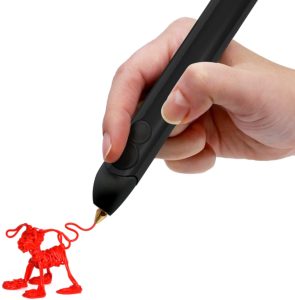
The 3Doodler Create+ 3D pen is designed to give you the best doodling experience. This product offers great speed control and reduced chances of nozzle clogging.
This 3D pen comes with a variety of different colors of 3Doodler create plastics and a detailed manual. The plastics are quite safe and non-toxic, but we still recommend you don’t inhale it. Better to be safe than sorry.
You can doodle with this pen for extended periods using a 3Doodler booklet that contains different project templates. This product has a dual drive that offers you greater control of speed for various doodling methods.
The temperature control is well optimized for different plastic types. Extruded plastics also harden quickly, this allows for freehand drawing. You can also install the 3Doodler app on your mobile device, this app is loaded with very easy instructions. You also get to receive badges for completed projects.
You may be quite surprised about what you can achieve with this 3D pen. A handmade gift for your best pal, a decoration for your next party, and so forth. If you’re a DIYer, this 3D pen is perfect for you. You can decide to fix stuff in your home without hiring technicians.
Pros
- Easy to use: All you need to do is to plug in the 3D pen to a power source and insert a 3Doodler to create plastic. Patiently wait for the 3D pen to heat up and you’re good to go!
- Free 15 colors of plastic refills and stencil book: When you buy this product, you get 15 colors of plastic refills and a guide book.
- Smooth 3D drawing experience.
Cons
- It can be fragile to use. Handle with care when in use.
Bottom Line
If you love doodling, our team recommends this 3D pen. It’s a great pen to have. You don’t have to be an expert to use this 3D pen, it’s quite easy to use. Adults and teenagers can both use it without hassle. The only drawback we noticed is the fragile nature of the pen. You need to be careful while using it to avoid breakage. Overall, it is one of the best 3D pens available.
3. MYNT3D Pen
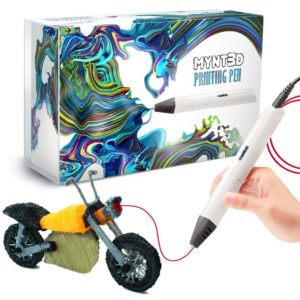
MYNT3D is the ideal 3D pen for professionals on both sides of the aisle, the artists and engineers. The level of control this product provides to you is unmatched. So, let’s take a deeper look at it!
This pen is aware it can’t cater to everyone. This is why it features a stepless speed button that allows you to set the speed of the extrusion to your exact liking. If the model you are working on demands intricate designing, you can slow down the speed. and if you are working merely filling in a large object, you can set the speed to the max to get the job done as quickly as possible.
The MYNT3D Pen doesn’t believe in limiting you in any way. It gives you the autonomy of choosing any filament you wish. This feature is what makes it unique amongst 3D pens. Most other pens can only work with either ABS or PLA filaments, while this one can work with both. You can use any type of filament with this pen as long as it is 1.75 millimeters thick and melts at temperatures between 130 and 240 degrees Celsius.
The design is just as impressive as the features. We found that reaching the buttons when working with it is incredibly easy and it doesn’t affect your precision. The ergonomic design makes it easy to use, and the ultra-slim exterior further adds to ease in control.
It doesn’t matter if you want to make a quick sketch or a complex object, with this pen you will be able to do it all. This is all due to the amazingly precise and responsive speed control that allows you to choose at what pace you want to do your work.
The most unique feature this 3D pen comes with is the ability to be powered via a USB cable. This means you can power it with a power bank, which allows you to take it with you just about anywhere.
Pros
- Incredible speed control
- Excellent ergonomic design
- Powered via a USB cable
- A wide range of usable filaments
Cons
- Tends to get quite noisy
Bottom Line
The MYNT3D pen might not be ideal for those who get easily annoyed by loud noises, but if you can bear it, you will find that this pen provides unmatched precision and freedom.
4. MYNT3D Super 3D Pen

This product is quite different from its predecessor: MYNT3D Printing Pen. With this product, you can draw, design, and repair. One major difference between this product and its predecessor is that this super 3D pen does not have an OLED display, unlike its predecessor. Though this product has a temperature adjustment screw that is used to switch between ABS and PLA.
This product is easy to use. When powered on, the red light indicates power, while the green light flashes mean the pen has switched to heating mode. This product has a speed slider that gives you the perfect extrusion speed. You can set the pen to crawl mode for intricate details. You can also decide to increase the speed for larger fills.
This super 3D pen has an ultrasonically sealed nozzle. This nozzle is clog-proof and it makes the product very durable. It has a kit that contains 3 colors of ABS plastic filament, a power adapter, and a slim touch pen with a 1-year warranty. This 3D pen is great for kids, artists, and engineers of all ages.
Pros
- Ultrasonically sealed nozzle: this feature makes the pen clog-proof
- Speed slider: this feature allows the user to pick the suitable speed
- Protected from defects for a year
Cons
- The nozzle melts easily. Avoid overheating by all means.
Bottom line
This product is good for you, especially if you’re on a tight budget. This pen does everything you want for a budget-price printing pen. From the reviews we read, we found out that customers love giving this product as a gift. The only downside of this product is the nozzle that melts easily. To prevent this from happening, avoid overheating at all costs. Overall, this super 3D is highly recommended.
So what do you think about 3D pens? Are they just a fad, or are they here to stay? Let us know in the comments below!
YOU MIGHT ALSO LIKE:
6 Profitable 3D Printing Business Ideas
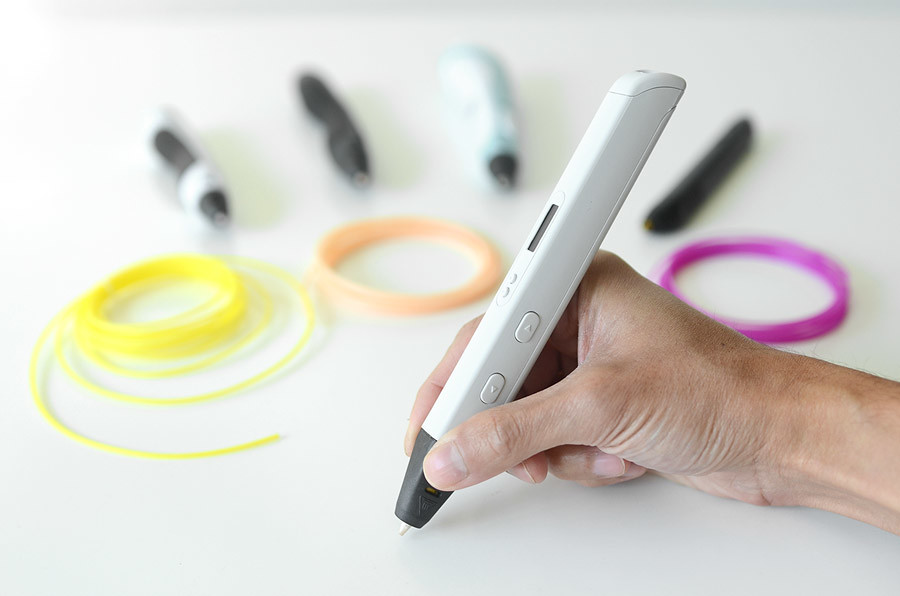
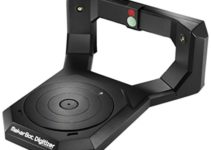
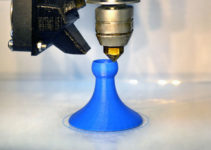
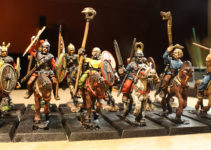
No Responses